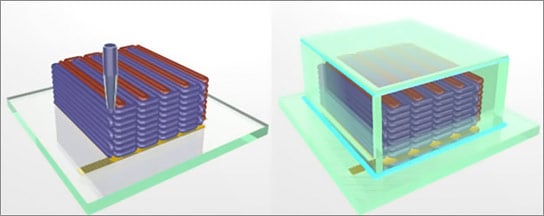Any time you run into a leading IoT engineer who says she draws inspiration from the early NYC skyscrapers (Why? “..Most of them were built during the Great Depression and make me think that in big crisis like the one we are living there are also the greatest opportunities for creating amazing things.”) you know you’re in for some outside-the-box thinking!

Alicia Asín Pérez of Libelium
That’s the case with Libelium’s Alicia Asín Pérez, who I had a chance to interview just before she was to leave for this year’s Mobile World Congress, where Libelium unveiled its new Smart Water sensors, the latest addition to the eight-year old company’s impressive list of IoT sensors.
What impresses me the most about the company is how Asín and co-founder/CTO David Gascón have pursued their vision of an open-source system (their Waspmote platform “sends any sensors’ data using any communication protocol to any information system so that anyone can play in the IoT”) without compromise from when they started the company.
After attending the Universidad de Zaragoza, the young engineers decided to enter the decidedly un-cool field of hardware, not app design.
They didn’t want to get trapped into serving only one industry vertical (at present they’re serving smart cities, smart water, smart metering, smart environment, security and emergencies, logistics, industrial control, smart agriculture, smart animal farming, home automation, and ehealth. Any areas they’re not serving?), so they refused to deal with VCs, bootstrapping the company before the days of crowdsourcing. They even appeared on a quiz show for entrepreneurs to get cash, and were prepared to head to Hollywood quiz shows (Asín knows a lot about a lot of subjects, LOL!) if need be.
Libelium is intent about focusing on open source solutions, walking their talk to the point of even using Linux computers.
They also get it about one of my “Essential Truths” of the IoT, that it “democratizes innovation.” On one hand, Libelium has partnered with major firms such as IBM (with the “Internet Starter Kit”), and, on the other, 30% of its revenues come from its work with the “Maker Movement,” through its “Cooking Hacks” division, which includes:
- +4000 products for DIY projects
- Waspmote starter kits
- Step-by step-tutorials to get started
- A community forum
Asin sounds like a revolutionary with her call for “democratizing the technology of the Internet of Things,” and speaks proudly of how Libelium quickly created a Radiation Sensor Board used by an ad-hoc network of activists who documented radiation levels after the Fukushima accident. Speaking to Postscapes, she emphasized that while IoT projects by major companies are important, it’s equally important to use the IoT to empower individuals:
“When you are in front of such a revolution, you can neglect individuals. It is a big mistake thinking about the IoT players as big companies or just companies. If we look at the general sociopolitical situation, at the citizen movements all across the globe, we see that individuals are just claiming more transparency and not depending on governments and big companies for accessing data: people want Open Data, Open Source, Open Hardware, Open Funding… Because of that, we see projects like Safecast for detecting radiation levels in Fukushima or Air Quality Egg in the Netherlands. People want to do things on their own and are finding support in all the crowdfunding platforms like Kickstarter and companies backing open hardware that allows them to access inexpensive technology. For example, we just launched a kit to experiment with eHealth and we have already sold more than 1,000 units. People are being more creative and innovative than ever, and everyone needs tools for doing that. Those ‘tools’ are sensors and providing them is our vision.” (my emphasis).
It’s too early in the IoT’s evolution to predict the ultimate winners, but I suspect that Libelium’s passion for open systems, its technical expertise at creating a growing array of sensors, and its ability to partner with both big and small firms will help it prosper over the long haul.

